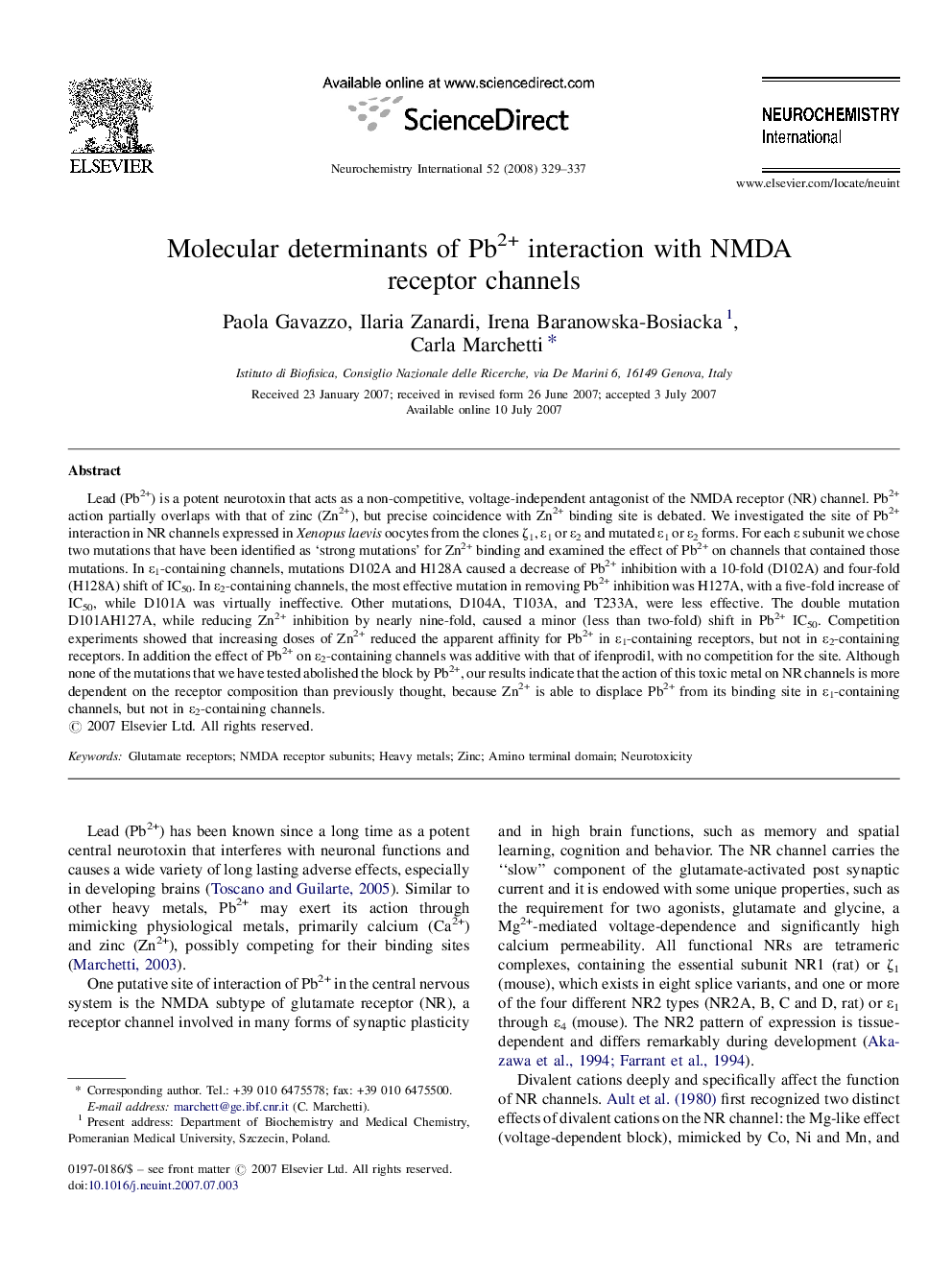| Article ID | Journal | Published Year | Pages | File Type |
|---|---|---|---|---|
| 8479463 | Neurochemistry International | 2008 | 9 Pages |
Abstract
Lead (Pb2+) is a potent neurotoxin that acts as a non-competitive, voltage-independent antagonist of the NMDA receptor (NR) channel. Pb2+ action partially overlaps with that of zinc (Zn2+), but precise coincidence with Zn2+ binding site is debated. We investigated the site of Pb2+ interaction in NR channels expressed in Xenopus laevis oocytes from the clones ζ1, É1 or É2 and mutated É1 or É2 forms. For each É subunit we chose two mutations that have been identified as 'strong mutations' for Zn2+ binding and examined the effect of Pb2+ on channels that contained those mutations. In É1-containing channels, mutations D102A and H128A caused a decrease of Pb2+ inhibition with a 10-fold (D102A) and four-fold (H128A) shift of IC50. In É2-containing channels, the most effective mutation in removing Pb2+ inhibition was H127A, with a five-fold increase of IC50, while D101A was virtually ineffective. Other mutations, D104A, T103A, and T233A, were less effective. The double mutation D101AH127A, while reducing Zn2+ inhibition by nearly nine-fold, caused a minor (less than two-fold) shift in Pb2+ IC50. Competition experiments showed that increasing doses of Zn2+ reduced the apparent affinity for Pb2+ in É1-containing receptors, but not in É2-containing receptors. In addition the effect of Pb2+ on É2-containing channels was additive with that of ifenprodil, with no competition for the site. Although none of the mutations that we have tested abolished the block by Pb2+, our results indicate that the action of this toxic metal on NR channels is more dependent on the receptor composition than previously thought, because Zn2+ is able to displace Pb2+ from its binding site in É1-containing channels, but not in É2-containing channels.
Keywords
Related Topics
Life Sciences
Biochemistry, Genetics and Molecular Biology
Cell Biology
Authors
Paola Gavazzo, Ilaria Zanardi, Irena Baranowska-Bosiacka, Carla Marchetti,
